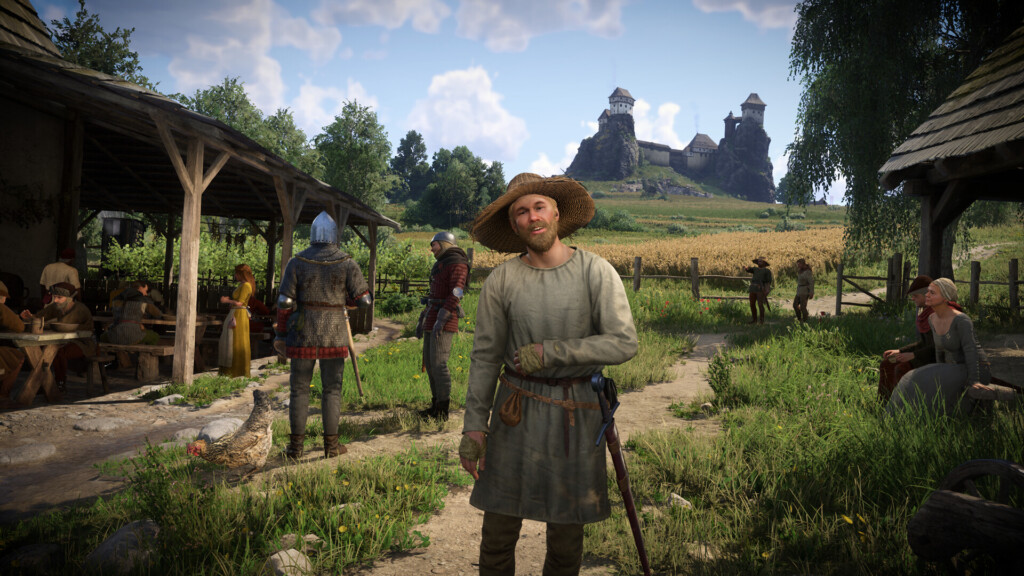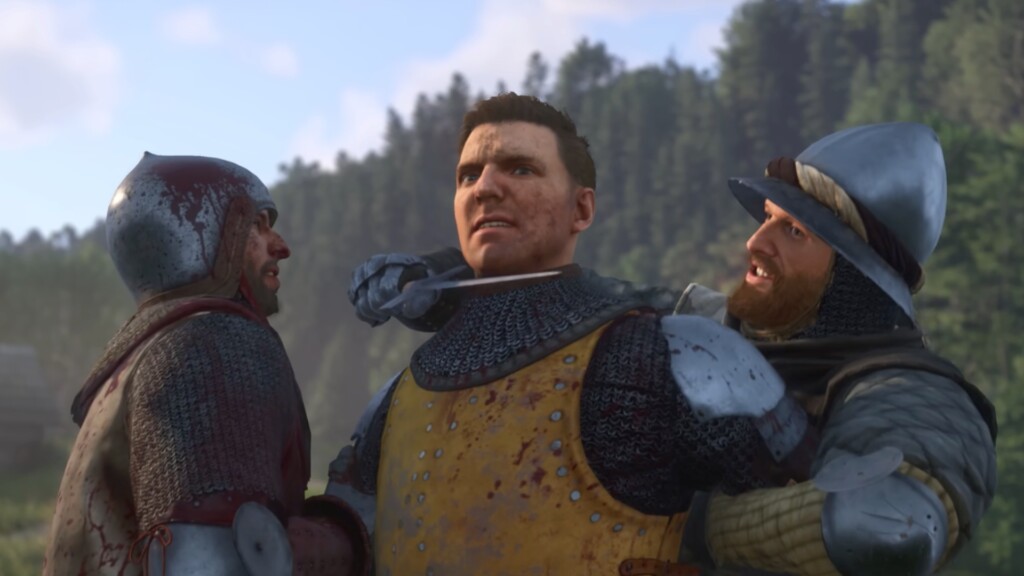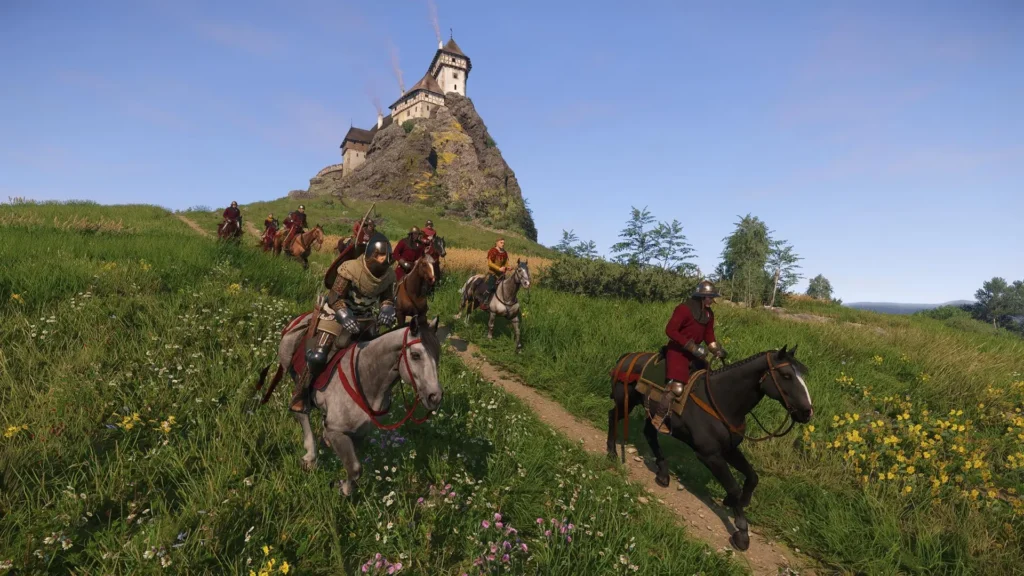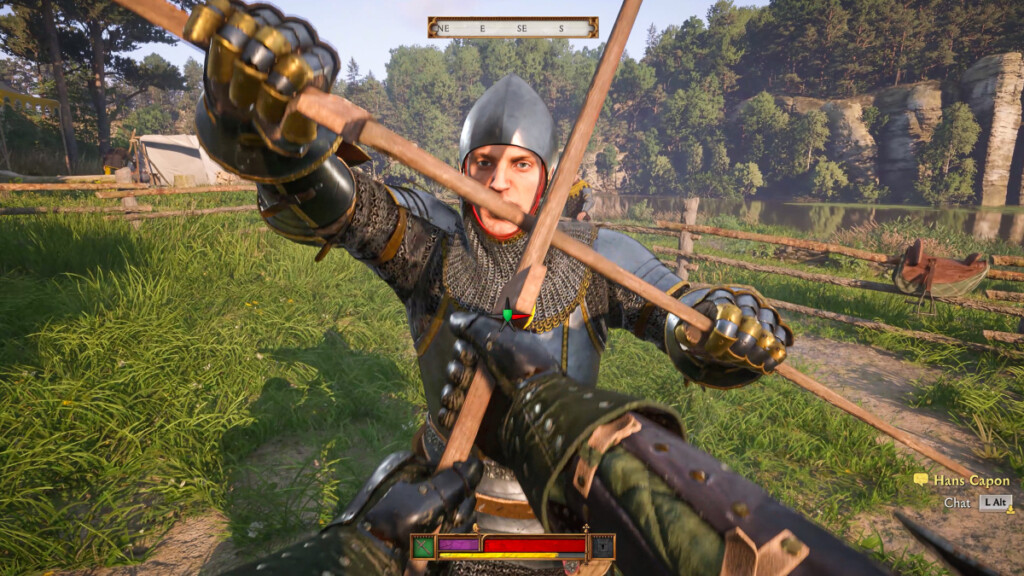There are moments when I wistfully think back to the first time I played Skyrim, wondering if I’d ever recapture that same sense of wonder. Then Kingdom Come: Deliverance 2 appeared, sweeping me off my feet in an exhilarating rush. With its masterful, skill-based combat system and a gripping, action-packed medieval story, it strikes a balance between being a sequel and an evolution of the original. Much like how The Witcher 3 elevated CD Projekt Red’s standing or Greedfall did for Spiders, this title takes the initial concepts and runs with them. Of course, no game of this scale is without technical hiccups, and sometimes its competing design goals clash, much like the internal conflicts faced by its protagonist, Henry. Nonetheless, it’s undeniable how impressive it is.
Picking up right where the first game left off in 2018, the story is easy enough to follow even if you haven’t played the original. The plot revolves around Henry, a blacksmith’s son turned warrior, who’s thrust into a world of political intrigue and brutal warfare. The diverse cast of characters, including an unpredictable lord and several notable historical figures, keeps things fresh without relying too heavily on the past.
Among the game’s standout features is the city of Kuttenberg, a place so immersive and rich in detail that it might just be one of the greatest virtual medieval cities in RPGs. It’s based on the real-life town, with the layout closely mirroring the modern grid. Exploring its vast streets, engaging in everything from sword school rivalries to solving a serial killer case, is a joy. Sure, some NPCs share the same voice or face, but this minor issue is easy to overlook when you’re lost in the bustling atmosphere of the city. I found myself spending hours just shopping for the best gear, which felt right for a character arriving in a major city.
The quests in this game are exceptional in their variety, making each one feel unique. There are roughly 100 quests, and nearly every one stands out, offering a memorable experience that would be a highlight in lesser RPGs. While some quests are stronger in concept than in execution (one particularly short horror-themed side quest could have been more impactful), they never feel like a chore. Instead, each quest feels like its own self-contained story, adding depth to Henry’s journey.




The expansive open-world maps are filled with breathtaking landscapes, each brimming with historically accurate details of late medieval Bohemia. The geography is largely wooded hills and meadows, which reflects the real-life region. It’s big enough to get lost in, and the contrast between villages and the open wilderness offers enough variety. A curious oversight, though, is the inability to enter most of the churches—something I’d have expected to be a highlight for a medieval European setting.
The main quest itself is a cinematic war epic, filled with intense battles, emotional moments, and thought-provoking questions about heroism and villainy. There were moments that made me cheer and others that brought me to tears. The antagonist is especially memorable, challenging my every decision in one of the most impactful final showdowns I’ve experienced in a game.
However, the mix of linear narrative and open-world sandbox design doesn’t always mesh perfectly. At one point, I encountered a frustrating sequence involving the Hungarian Camp. After a dramatic personal defeat, I spent the next 40 hours honing my skills, seeking revenge. When I finally returned, I wiped out nearly the entire camp in a thrilling and intense combat encounter. But shortly after, I had to infiltrate the same camp as a spy, with no recognition of the havoc I had wrought. This sequence forced me to sneak past unkillable NPCs multiple times, which was more of an annoying obstacle than a challenge. Moreover, my reputation took a hit, with the peasants despising me for killing the invading soldiers, a strange contradiction in a game that prides itself on realism and consequence. Despite this frustrating anomaly, it didn’t overshadow the overall experience.
Combat remains a highlight of the game. The skill-based swordplay has been refined from the first title, and while the balance of stats versus player skill might feel skewed at higher levels, it remains enjoyable and rewarding. Archery has also been significantly improved. The addition of blacksmithing, though a bit clunky, is a fun way to craft your own gear, and the improved alchemy system is intuitive and satisfying.
The perk system has seen an overhaul, making each level-up choice feel more impactful. Unlike the first game, which had perks that felt like minor tweaks, now you’re given meaningful upgrades that genuinely affect your playstyle. One of the new features I particularly enjoyed was leveling up scholarship to unlock alternative quest solutions, allowing me to use wit and logic to outsmart enemies—a satisfying departure from the usual combat-focused resolutions.
On a technical note, the game runs beautifully on my 4070 Ti, even at 4K with high settings. It’s impressive, considering the original Kingdom Come: Deliverance struggled to run at max settings even on a similar rig. While there are a few bugs here and there, most are harmless or quirky, adding to the charm rather than detracting from the experience.
Verdict
Kingdom Come: Deliverance 2 takes up the mantle of the reactive first-person RPG that Bethesda left behind, and it does so with a remarkable level of polish. The combat is unparalleled, and the story is both deep and emotionally resonant. While its hybrid approach—combining linear narrative with an open-world sandbox—sometimes leads to awkward conflicts, for the most part, it strikes a balance that allows players to enjoy both structured storytelling and freedom. I found myself fully immersed in its world, and it’s a journey I won’t forget anytime soon.
